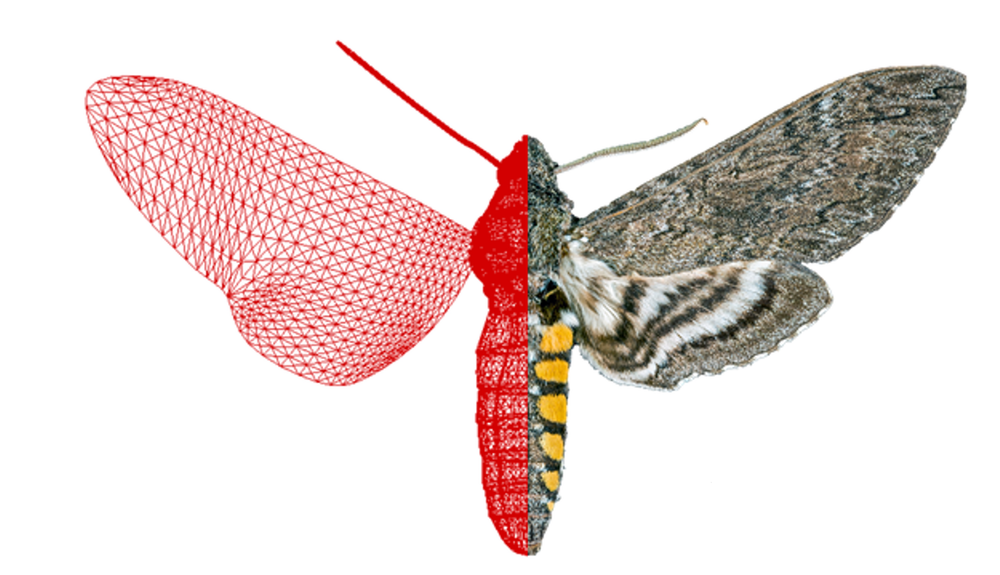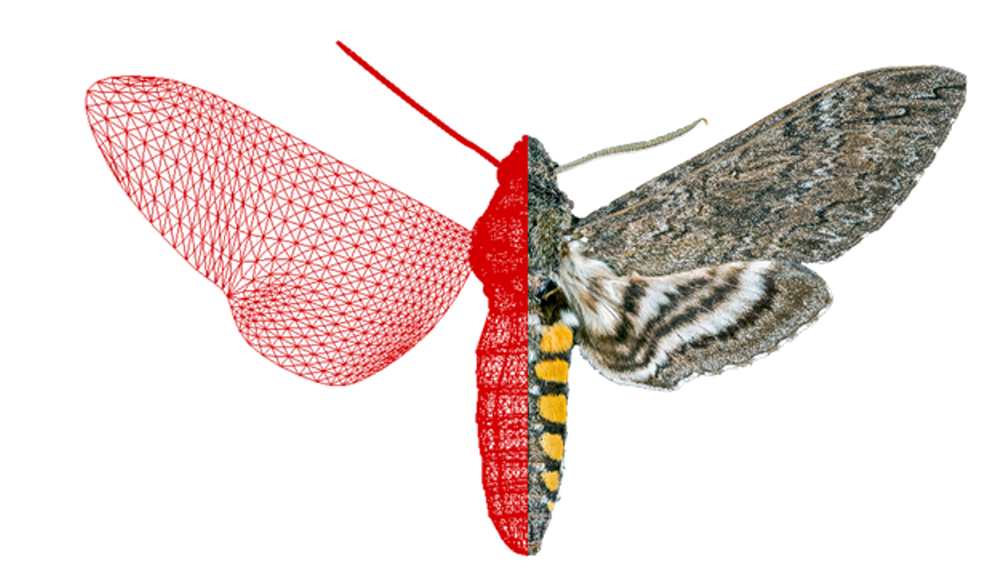Why Moths Are Not So Speedy
Hawkmoths fly only half as fast as researchers would expect, based on comparisons with other insects and birds. Chengyu Li of Villanova University in Pennsylvania and his colleagues have now found that these moths are limited by their inability to substantially twist their wings between upstrokes and downstrokes, as many birds do [1]. The team used high-speed video recordings of the moths hovering and flying at 2 m/s and 4 m/s to generate a 3D model of the insect. The model allowed the researchers to simulate the flight motion and to determine the complete time evolution of parameters such as the positions of the wings, the forces at each point on the wings, and the power required to keep the insect aloft. Researchers have previously observed and simulated flying insects, but Li and his colleagues were among the first to use real insect data as the basis for simulations, and the team focused on answering a specific question.
The team found that in hovering flight, the moth’s wings are tilted close to vertical, so that both upstrokes and downstrokes provide lift. But when the moth flies forward at increasing speeds, the wings become more horizontal, to help the moth better slice through the air. With the wings in this more streamlined orientation, the upstrokes become detrimental, creating a downward force on the insect. This “negative lift” becomes stronger with increasing speed, requiring the downstrokes to compensate by providing more lift. The forward speed tops out at 5 m/s when the wings reach their lift-generating limit. The simulations showed that the energy required to fly doesn’t change very much with increasing speed, disproving one hypothesis that blamed moth slowness on a lack of power.
Birds use a similar horizontal wing orientation, but they are able to fly much faster than moths. Their bones and muscles provide greater control of the precise shapes of their wings, allowing them to reduce the negative lift of upstrokes.
–David Ehrenstein
David Ehrenstein is a Senior Editor for Physics Magazine.
References
- S. Lionetti et al., “Aerodynamic explanation of flight speed limits in hawkmoth-like flapping-wing insects,” Phys. Rev. Fluids 7, 093104 (2022).





